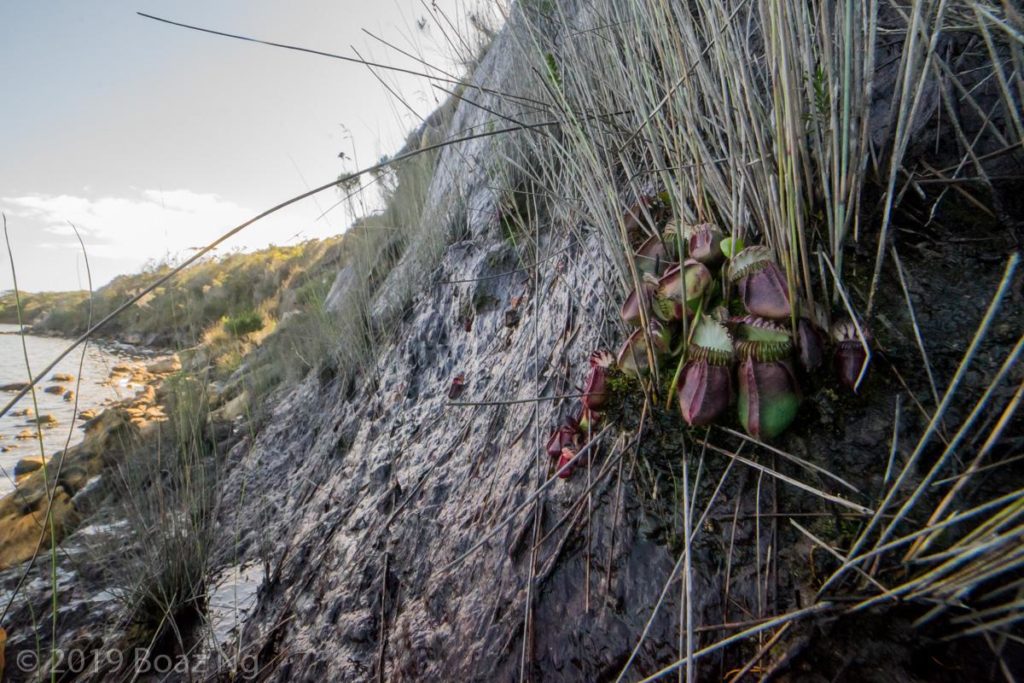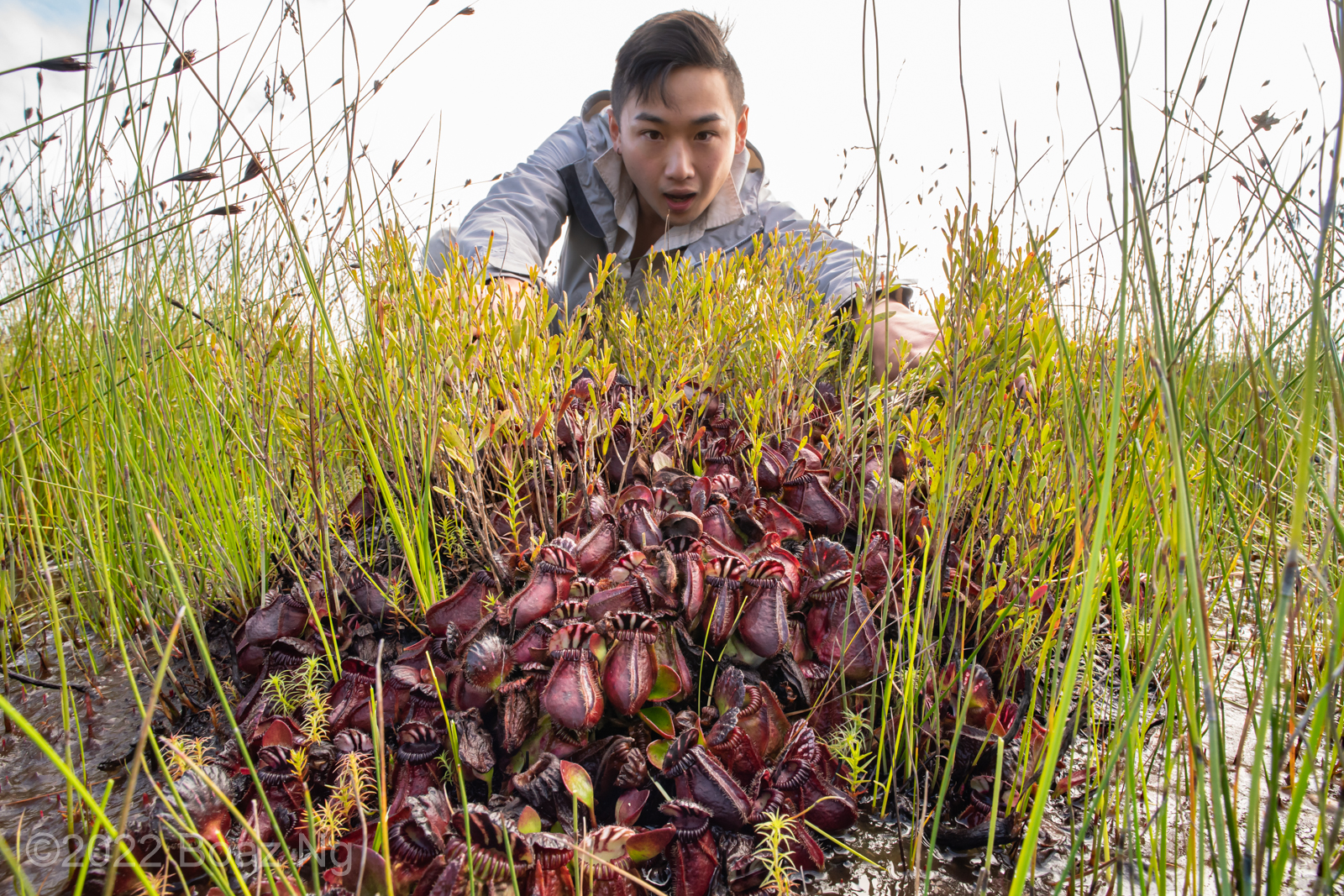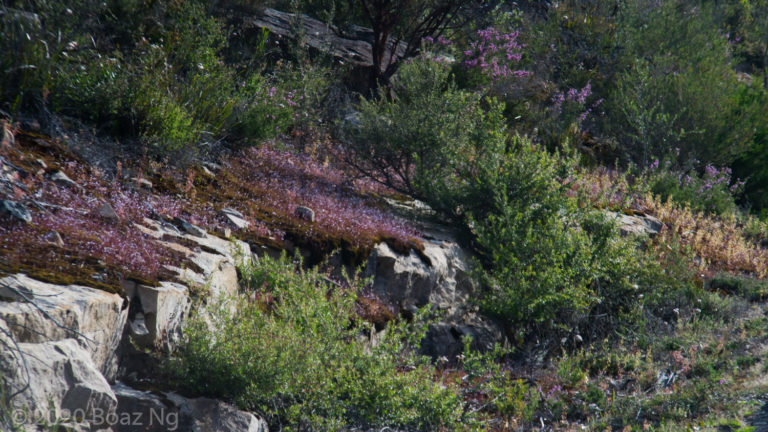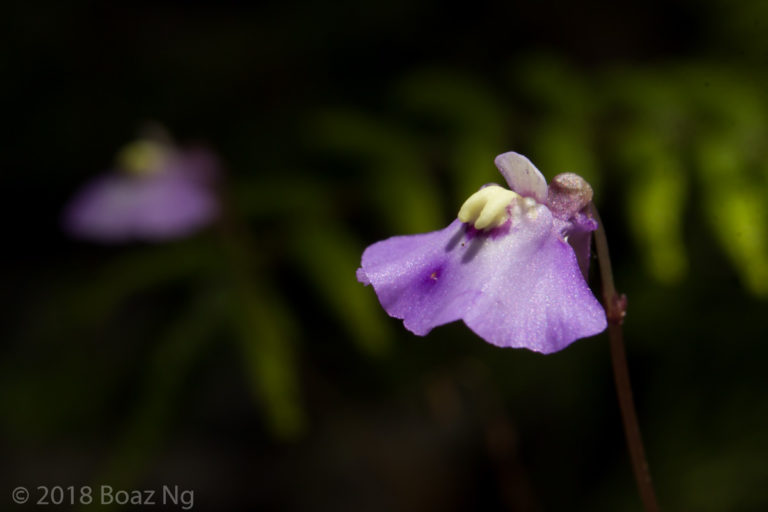The Albany Pitcher Plant (Cephalotus follicularis) is a carnivorous plant endemic to the south coast of Western Australia. The species has specific environmental requirements that make it naturally uncommon, including reliance on natural fire cycles for its ecology.
Cephalotus is distributed along the south coast of Western Australia from Augusta to Cheynes Beach. This region has a gently undulating topography with wide, swampy basins that form in the valleys between the hills. Cephalotus grows on slopes at the periphery of the basins in perennial seepages at the elevation where groundwater begins to percolate out of the hillside. These seepages occur at the transition between the drier heathland or forest above and the wet swamp flat below and are usually marked by the growth of Leptospermum Tea Tree bushes.
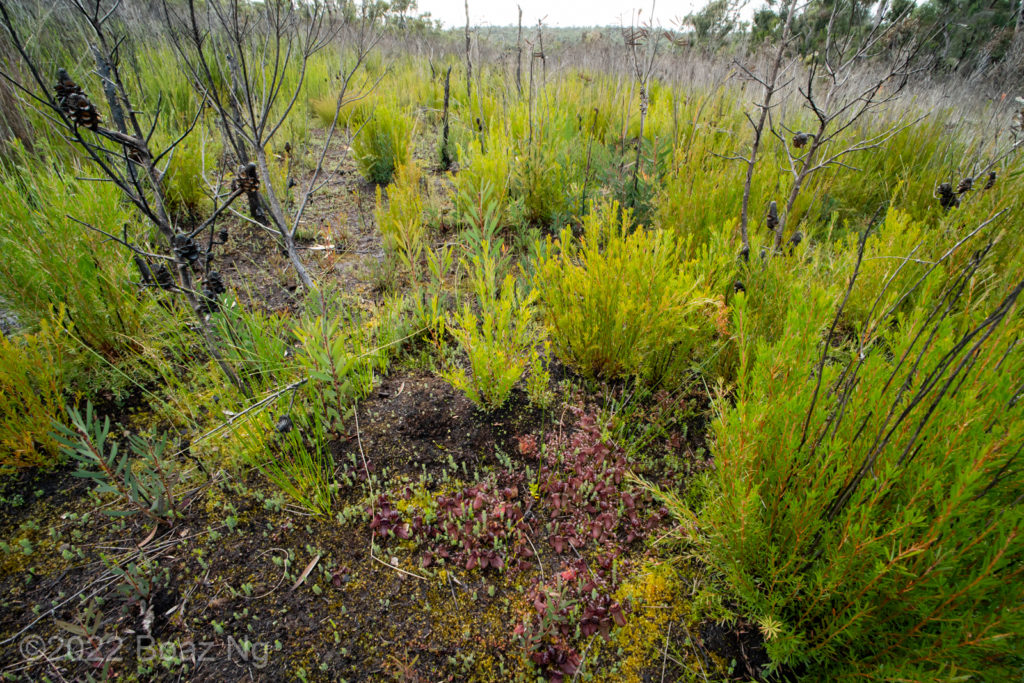
Within these seepages, Cephalotus grows in peaty substrates, often but not always in slight mounds that accumulate at the base of the tea trees. The rosettes of the plants are usually situated slightly above stepped pools of water but can be inundated during wetter seasons or after rain. Although the substrate is often waterlogged, the water is never stagnant as it is constantly seeping throughout the landscape. Conversely, the soil can be just moist rather than wet during drier periods.
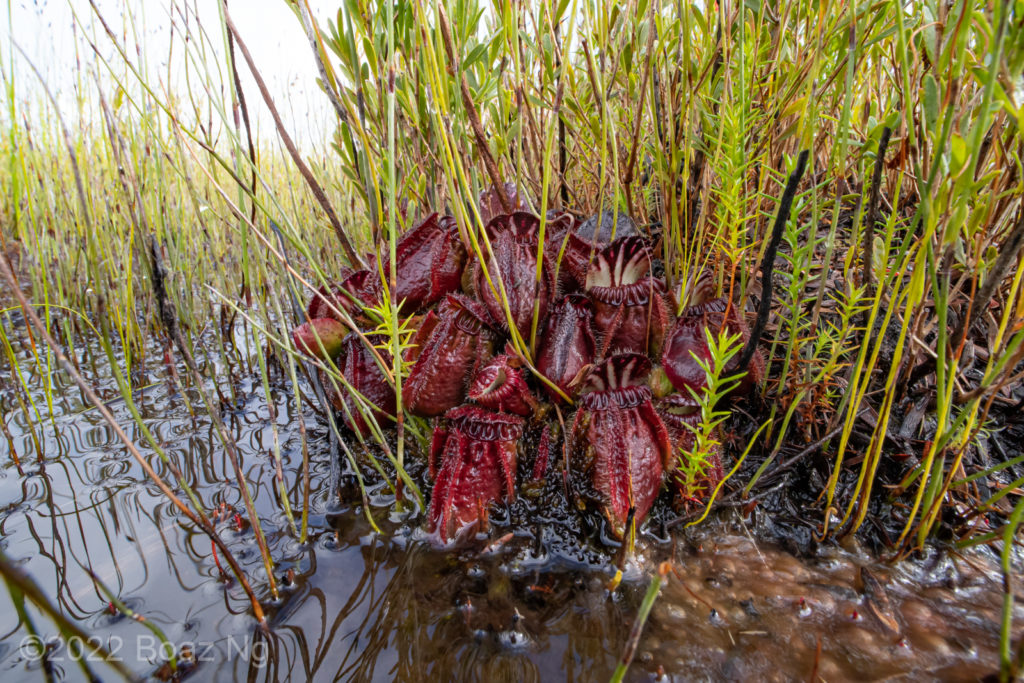
At the majority of sites, bushfires are essential to the growth cycle of Cephalotus. In unburnt habitats, the swamps are so thickly grown in with 2-3 meters of impenetrable bushes that sunlight is unable to reach the ground. Cephalotus persists in a semi-dormant state during this period. Specimens adjust to the deep shade by increasing the proportion of light-collecting foliage leaves and keeping trap production to a minimum. These plants are usually small and green.
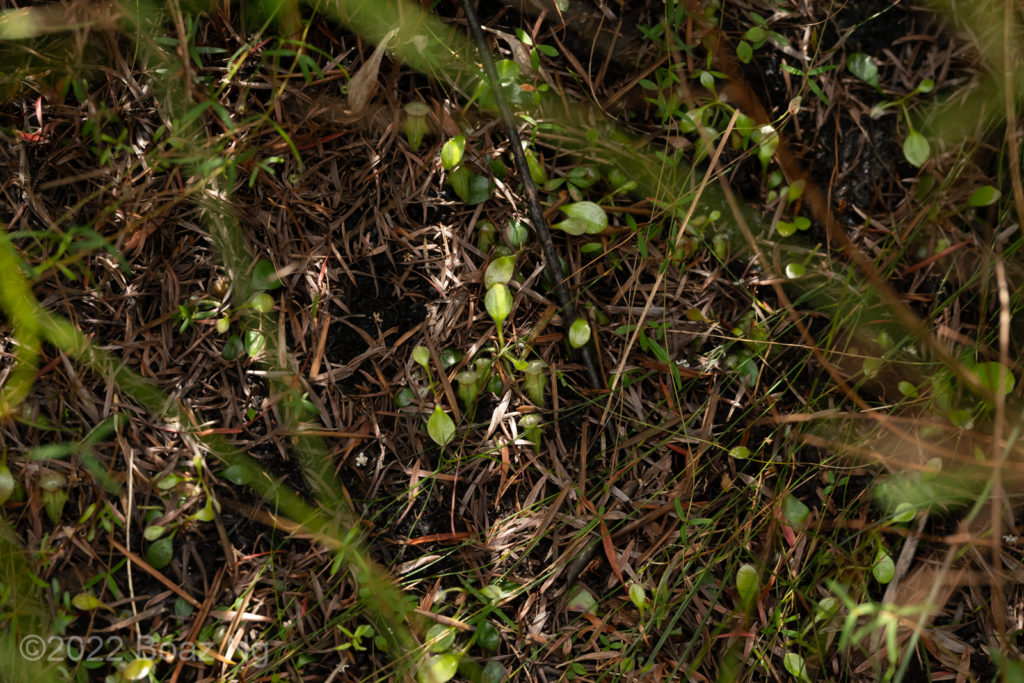
After a bushfire sweeps through the area, the cover of bushes is completely removed and sunlight reaches the now-exposed ground. Cephalotus quickly recovers from its thick rootstock and takes advantage of the drastically increased light and the influx of nutrients from the bushfire ash to increase its size and reproduce. Plants in post-fire environments are large with many traps and often vivid red. Blooming occurs en masse in the summers following the fires with the long flower scapes reaching above the low recovering scrub. The seedlings are able to colonise the bare ground and grow to a substantial size over the next few years before the recovered bush thickens again and chokes the plants of light.
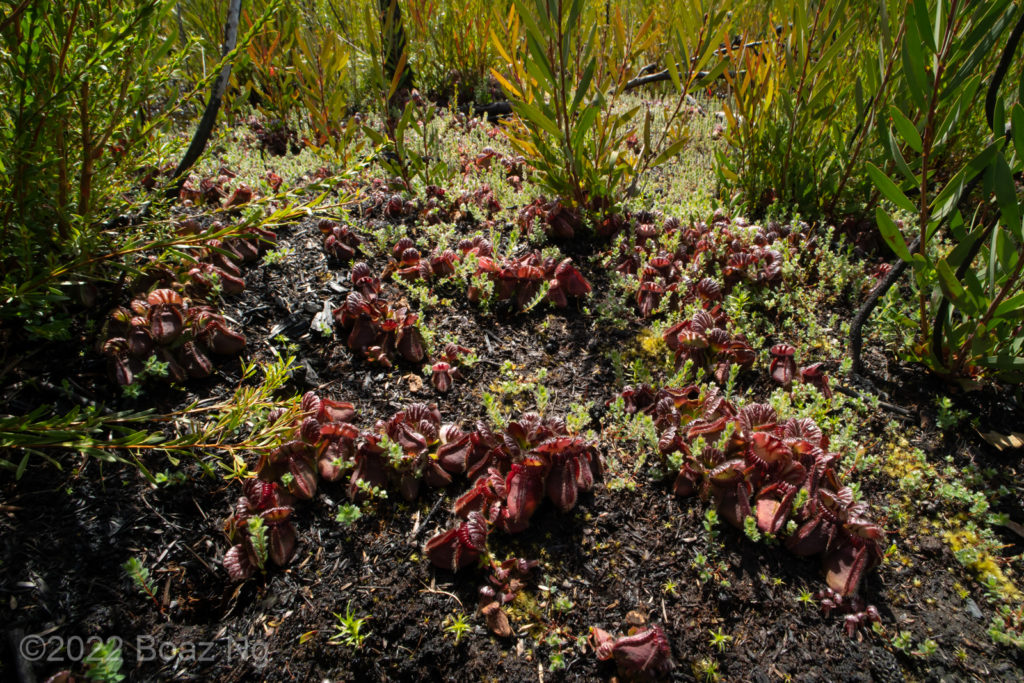
Cephalotus is rarely observed in its natural habitat owing to the impenetrable nature of the swamps in the years between fires. Permanently active populations are rather rare and usually found in areas of human disturbance that simulate the clearing of the landscape by a fire. This can include clearings from fire trails, powerlines and drainage cuts.
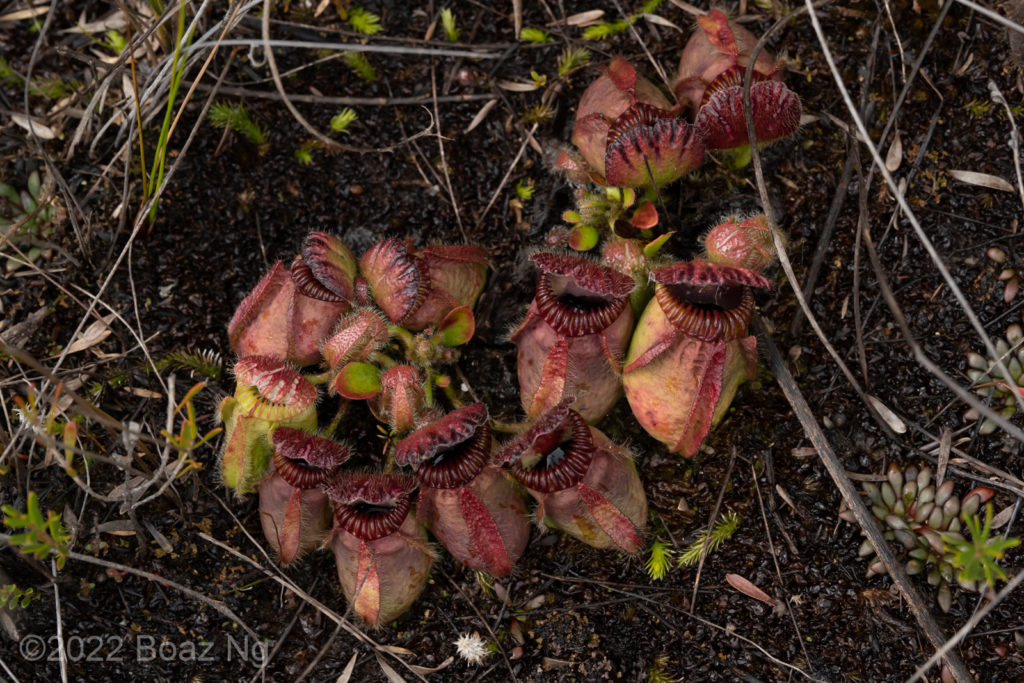
A notable atypical natural site with perenially growing plants occurs on an often photographed cliff where elevated swampland drops abruptly into the waters of an inlet. A sizeable population of Cephalotus grows on the massive seepage formed along the cliffs. The unconsolidated and waterlogged soils of the cliffside readily crumble into the inlet during storms. The population is able to maintain its size despite often losing plants to erosion as the freshly exposed cliffside seepages encourage increased flowering and seedling recruitment rates.
